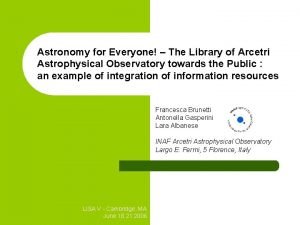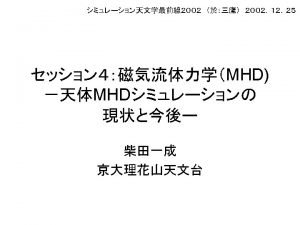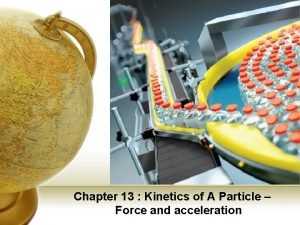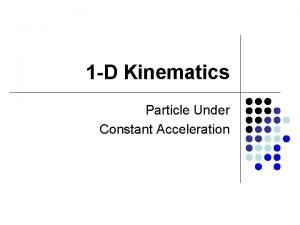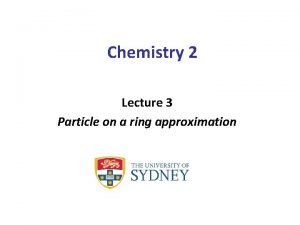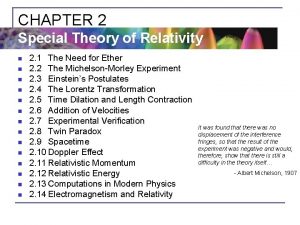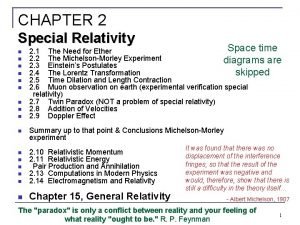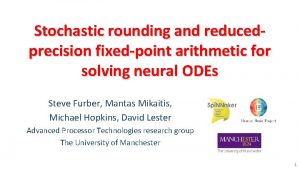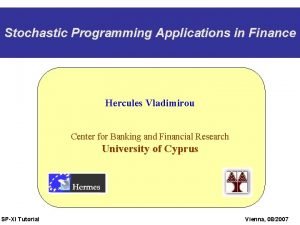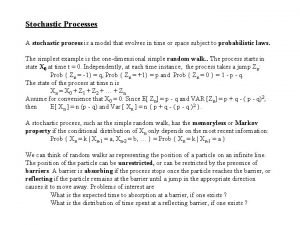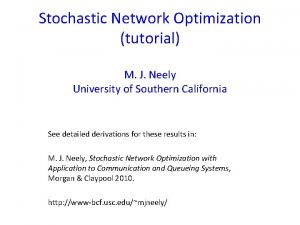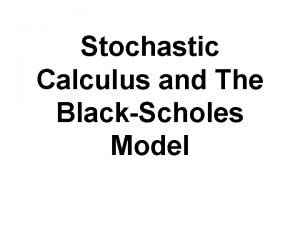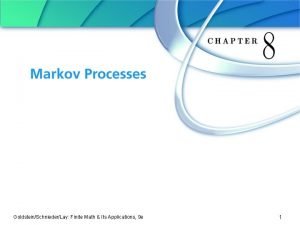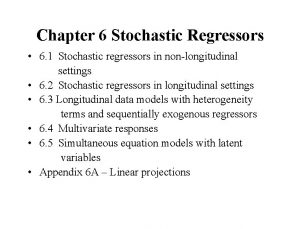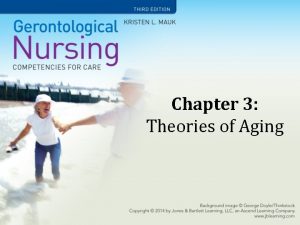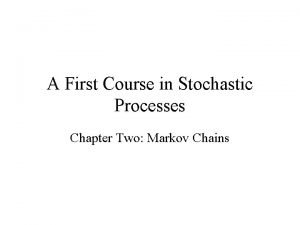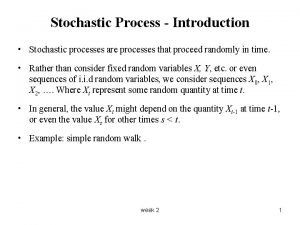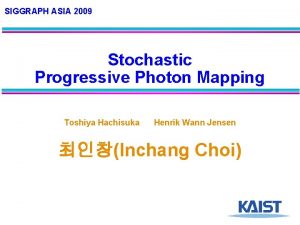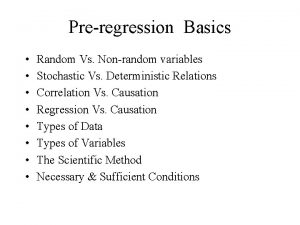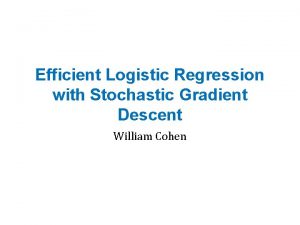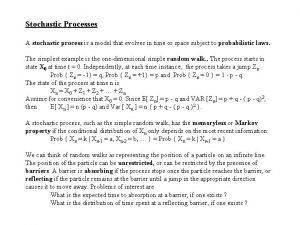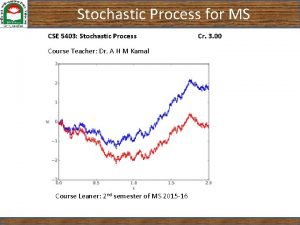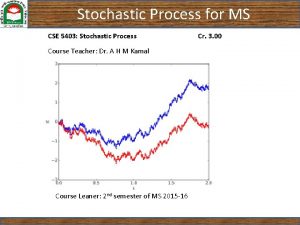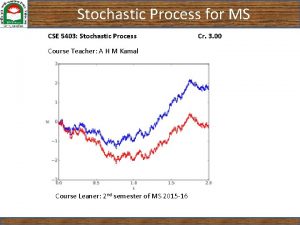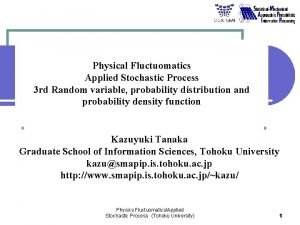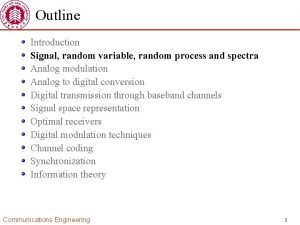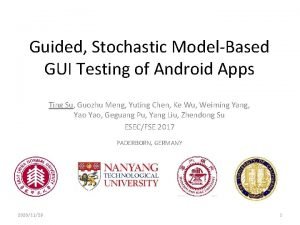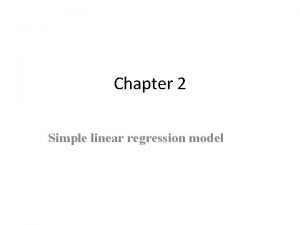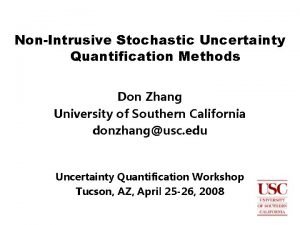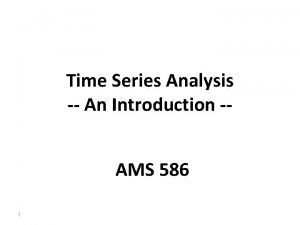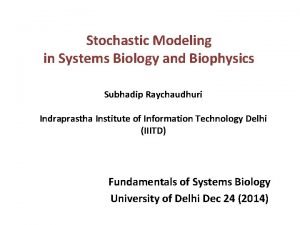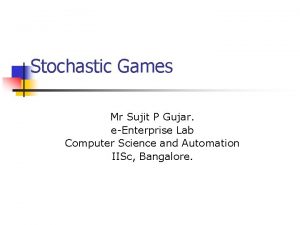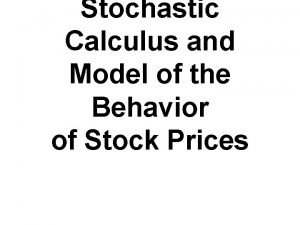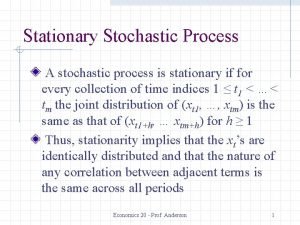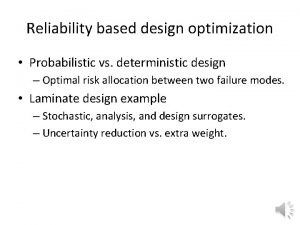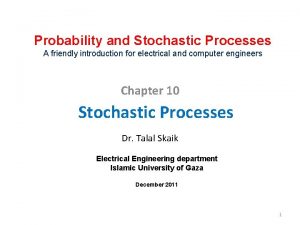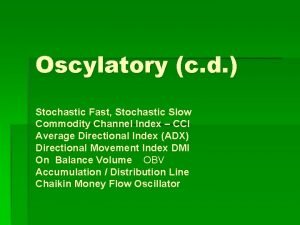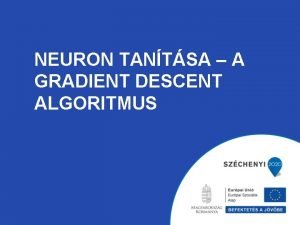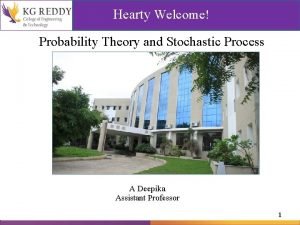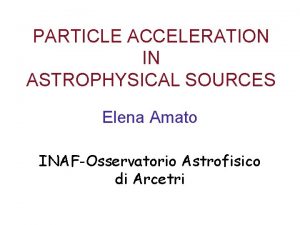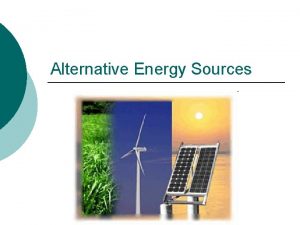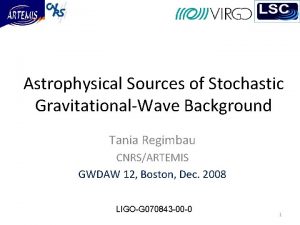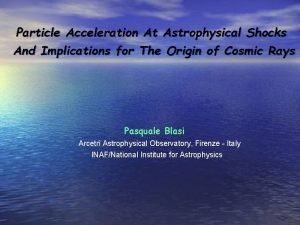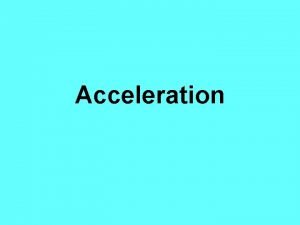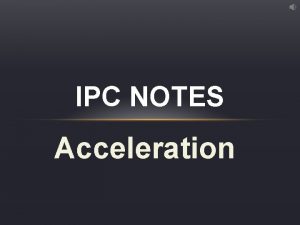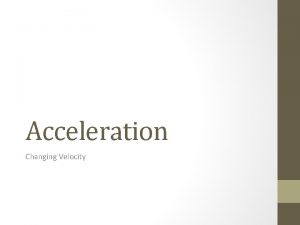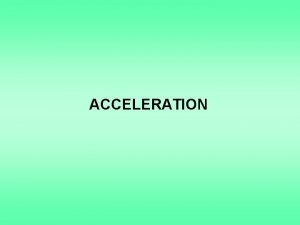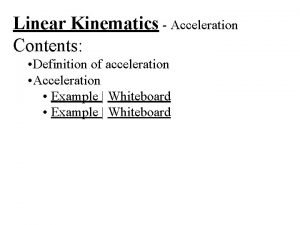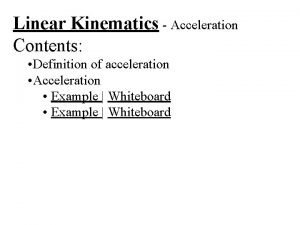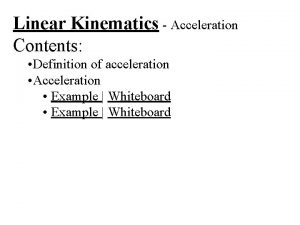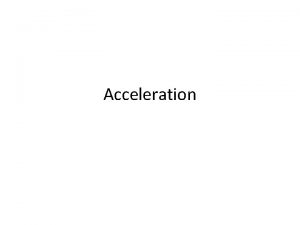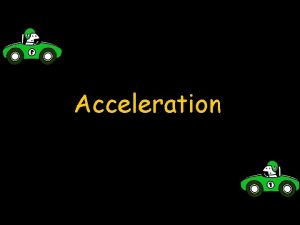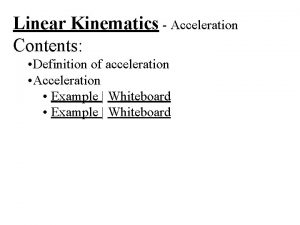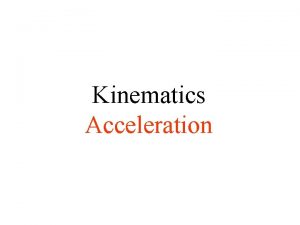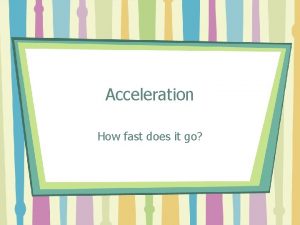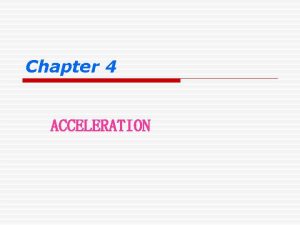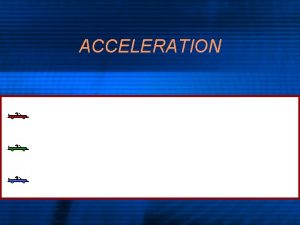Stochastic Particle Acceleration in High Energy Astrophysical Sources



















































- Slides: 51

Stochastic Particle Acceleration in High Energy Astrophysical Sources Siming Liu University of Glasgow Collaborators Vahe’ Petrosian, Yanwei Jiang: Stanford University Zhonghui Fan: Yunnan University Oct. 2008 Krakow, Poland

Outline I: Observations: Distribution II: Mechanism: Fermi Acceleration III: Shock Model IV: Observations: Acceleration Efficiency V: Stochastic Particle Acceleration Model VI: Conclusions

I: Discovery of Cosmic Rays Victor Franz Hess 1912

I: Birth of Radio Astronomy Karl Jansky 1933 Grote Reber 1944

II: Fermi Mechanism Particles interact with Macroscopic objects Electro-Magnetic Interaction But not collisional

III: Shock Model 1/1/2022 6

III: Shock Model • Scattering Mechanism • Injection Problem or Particle Acceleration at Low Energy Wave Particle Interactions!!! 7

IV: Acceleration Efficiency

IV: Solar Energetic Ions

V: Free Energy Dissipation and Turbulence

V: Turbulence Cascade • Kolmogorov U(L) U 3(L)/L = constant k~1/L U(k) ~ k-1/3 ʃ E(k) dk~ U^2(k) ~ k-2/3 E(k) ~ k-5/3 • Kraichnan V>U U 4/LV = constant U(k) ~ k-1/4 ʃ E(k) dk~ U^2(k) ~ k-1/2 E(k) ~ k-3/2

V: Diffusion Approximation Cascade ʃ W(k) k 2 dΩ ~ E(k) Damping Suppression of turbulence cascade by wave propagation Jiang et al. 2008

V: Dispersion Relation Fast Modes Alfven Modes

V: Wave Damping (WHAMP Code) He-cyclotron p-Landau e-Landau

V: Alfven Wave Cascade

V: Turbulence Cascade Dispersive Effects MHD regime

V: Damping Effects Jiang et al. 2008

V: Turbulence Cascade and Damping

V: Turbulence Cascade and Damping Observation: Simulation: (Leamon et al. 1998) (Jiang et al. 2008)

V: Dispersion Relation

V: Electron-Whistler Resonance

V: Dispersion Relation Fast Modes Alfven Modes

V: 3 He vs 4 He

V: 3 He vs. 4 He

V: A Complete Treatment of Stochastic Acceleration and Plasma Heating Jiang et al. 2008

V: A Complete Treatment of Particle Acceleration in Magnetized Dissipative Plasmas Acceleration by Large Scale Structure Shock Waves Electric Fields Jiang et al. 2008

Observations HESS Slide 27

Challenges to the Hadronic Models No thermal X-rays Egret upper limit SNR RX J 1713. 7 -3946 1 Suppression of Electron Acceleration 4 Hard with p<2. 0 2 High Energy & 3 Spectrum Density Requirement Slide 28 Tanaka et al.

Challenges to the Hadronic Models Tanaka et al. Slide 29

Challenges to the Hadronic Models 6 Lack of Correlation between Te. V and Cloud Distribution: Plaga Slide 30

Challenges to the Leptonic Models 1: Te. V spectrum too narrow: Background photon? Porter et al. Tanaka et al. Slide 31

Challenges to the Leptonic Models Uchiyama et al. 2007 2: Weak B field: Variability? Tanaka et al. Slide 32

A New Paradigm for Collisionless Shocks Lee et al. 1994 Slide 33

Speed Profiles in the Downstream Slide 34

Turbulence spectrum Slide 35

Electron Acceleration by Fast Mode Waves Slide 36

Spectral Fit to SNR RX J 1713. 7 -3946 Slide 37

The Nature of the SNR Shock Slide 38

X-ray Variability Uchiyama et al. 2007 Slide 39


Turbulence spectrum Slide 41










VI. Conclusions Plasma Wave Turbulence is an important channel for the release of freeenergy in high energy astrophysical sources Stochastic Acceleration by it can lead to a quantitative treatment of plasma heating and acceleration of non-thermal particles
 Arcetri astrophysical observatory
Arcetri astrophysical observatory Astrophysical journal keywords
Astrophysical journal keywords Kinetics of a particle force and acceleration
Kinetics of a particle force and acceleration Constant acceleration equations
Constant acceleration equations Centripetal acceleration
Centripetal acceleration Linear to angular velocity
Linear to angular velocity Is radial acceleration the same as centripetal acceleration
Is radial acceleration the same as centripetal acceleration Linear acceleration vs tangential acceleration
Linear acceleration vs tangential acceleration Tangential acceleration and centripetal acceleration
Tangential acceleration and centripetal acceleration Print sources of information
Print sources of information Importance of water resource management
Importance of water resource management Particle on a ring
Particle on a ring Relativistic kinetic energy
Relativistic kinetic energy Kinetic energy of a relativistic particle
Kinetic energy of a relativistic particle Particle in a box equation
Particle in a box equation Energy energy transfer and general energy analysis
Energy energy transfer and general energy analysis Energy energy transfer and general energy analysis
Energy energy transfer and general energy analysis Stochastic rounding
Stochastic rounding Stochastic programming
Stochastic programming Asynchronnous
Asynchronnous Stochastic optimization tutorial
Stochastic optimization tutorial Inventory modeling
Inventory modeling Liabulities
Liabulities Stochastic vs dynamic
Stochastic vs dynamic Stochastic matrix
Stochastic matrix Regressors meaning
Regressors meaning Non stochastic theory of aging
Non stochastic theory of aging A first course in stochastic processes
A first course in stochastic processes Stochastic process introduction
Stochastic process introduction Stochastic progressive photon mapping
Stochastic progressive photon mapping Agent a chapter 2
Agent a chapter 2 Discrete variable
Discrete variable Gradient descent java
Gradient descent java Stochastic process modeling
Stochastic process modeling Stochastic process
Stochastic process Stochastic process
Stochastic process Stochastic process
Stochastic process Stochastic process
Stochastic process Wss process
Wss process Guided, stochastic model-based gui testing of android apps
Guided, stochastic model-based gui testing of android apps Sample regression function (srf)
Sample regression function (srf) Stochastic uncertainty
Stochastic uncertainty Components of time series
Components of time series Stochastic vs probabilistic
Stochastic vs probabilistic Stochastic vs probabilistic
Stochastic vs probabilistic Stochastic calculus
Stochastic calculus Stationary stochastic process
Stationary stochastic process Stochastic vs probabilistic
Stochastic vs probabilistic Stochastic process
Stochastic process Stochastic fast
Stochastic fast Gradient descent
Gradient descent Stochastic processes
Stochastic processes
